User Roles
Creating new user roles
Webex Campaign has a very flexible role configuration that enables the creation of a hierarchy of different users with different levels of permissions and has control over those roles beneath them. Setting up roles is a prerequisite for use of the Webex Campaign.
In pre-defining roles and permissions, an organization gains greater control over the way it runs and manages campaigns. An Administrator (CustomerAdmin) role – assigned by Webex Campaign for the tenant – has the rights and privileges to define and create roles beneath it. Typically, whatever an enterprise decides to name roles, the following are the types of the role created:
- Group Owner: Creates a group of users who are allowed to share the common assets, e.g. templates, etc. belonging to a particular group for creating campaigns.
- Moderator: This type of user approves/rejects the campaigns created by the Campaign Manager or other types of users who are not privileged to push campaigns directly.
- Campaign Manager: This type of user is allowed to create and run campaigns on the platform with the given permissions.
- Dashboard User: This type of user is allowed to access the reporting dashboard on the platform with viewing rights.
Administrators can create any number of users with equal or fewer privileges (i.e. access permissions). The newly created users in turn can create any number of sub-users below them and assign equal or fewer privileges. This helps campaign managers to allocate specific tasks to specific users or user groups.
Adding a New Role
Follow these steps to create a new role:
- Navigate to Administration > Users & Roles > User Roles list screen and click +Add New Role.
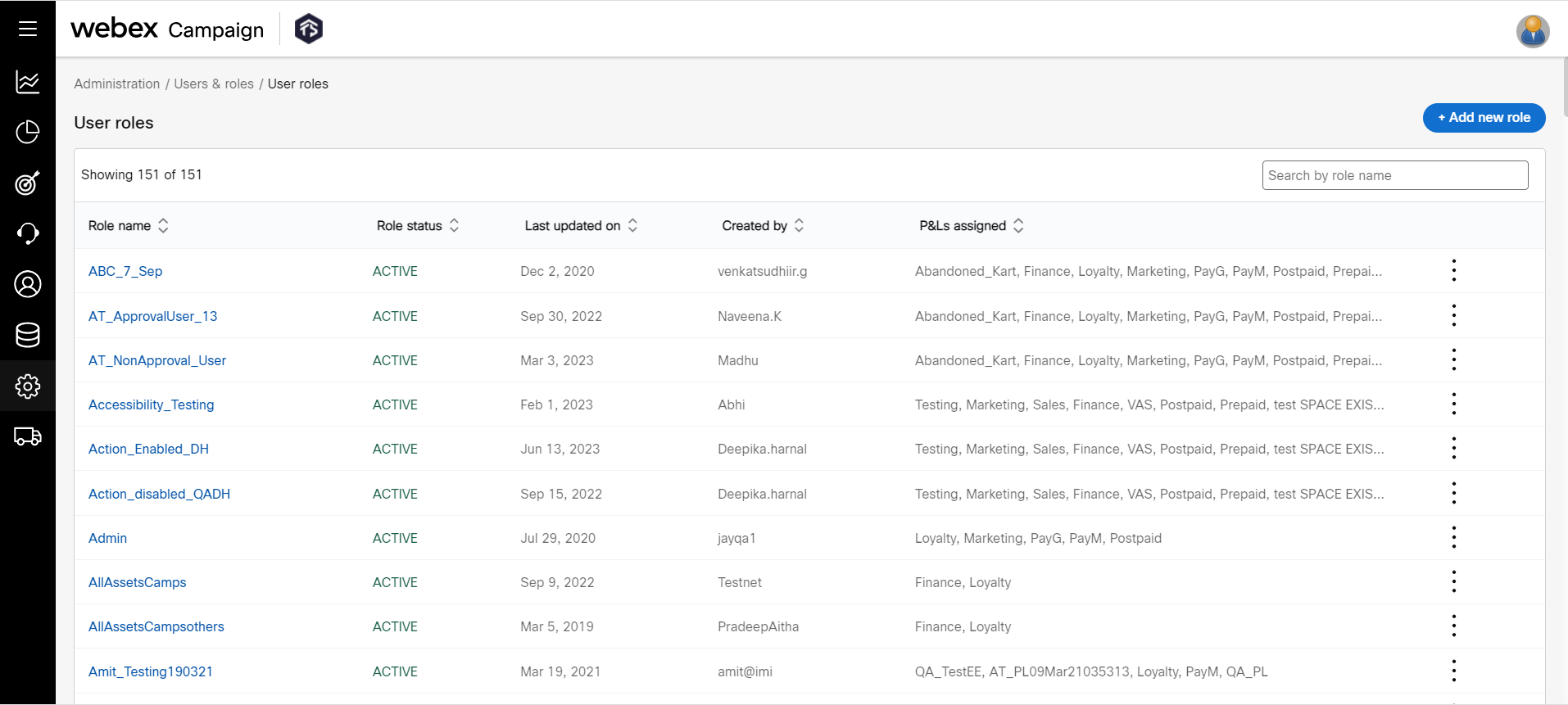
- In the Create role screen, you can proceed to create a new role or copy from an existing role. To create a new role click Proceed.
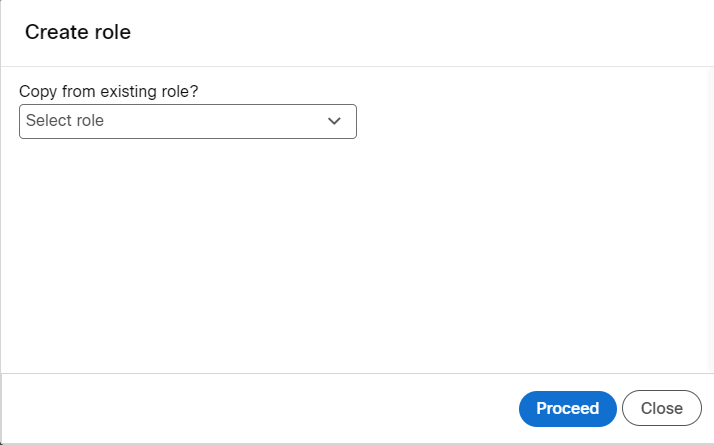
- Enter details for the following fields:
- Role Name: Enter a name for the role.
- Role Description: Enter a description for the role.
- P&Ls: Select the pre-configured P&L (Cost Centre or Department) to assign to the user role.
- Able to view encrypted data: Select whether the role is able to view encrypted data.
- Auto approval of own assets: Select whether the role is able to approve their own assets.
- Approve other users assets: Select whether the role is able to approve other users assets.
- Auto approval of own deployments: Select whether the role is able to auto-approve their own deployments.
- Approve other groups deployments: Select whether the role is able to approve other group deployments.
- Able to view only specific campaigns on dashboard: Select whether the role is able to view only specific campaigns on the dashboard. This option is specifically for viewing the dashboard of the campaign. If this option is set, the user will not be able to approve any campaign.
Users with a Dashboard role will not have access to any other part of the Webex Campaign apart from the Dashboard. In addition, they will only be able to view metrics on the Dashboard for the specific campaigns allowed to them during user creation.

- To assign permissions for a role, click through each module and select the required permission options (Is Required/ Read / Create / Update / Delete/ All). To enable all screens of the module, click the checkbox Enable/ Disable all screens and permissions for this module?.
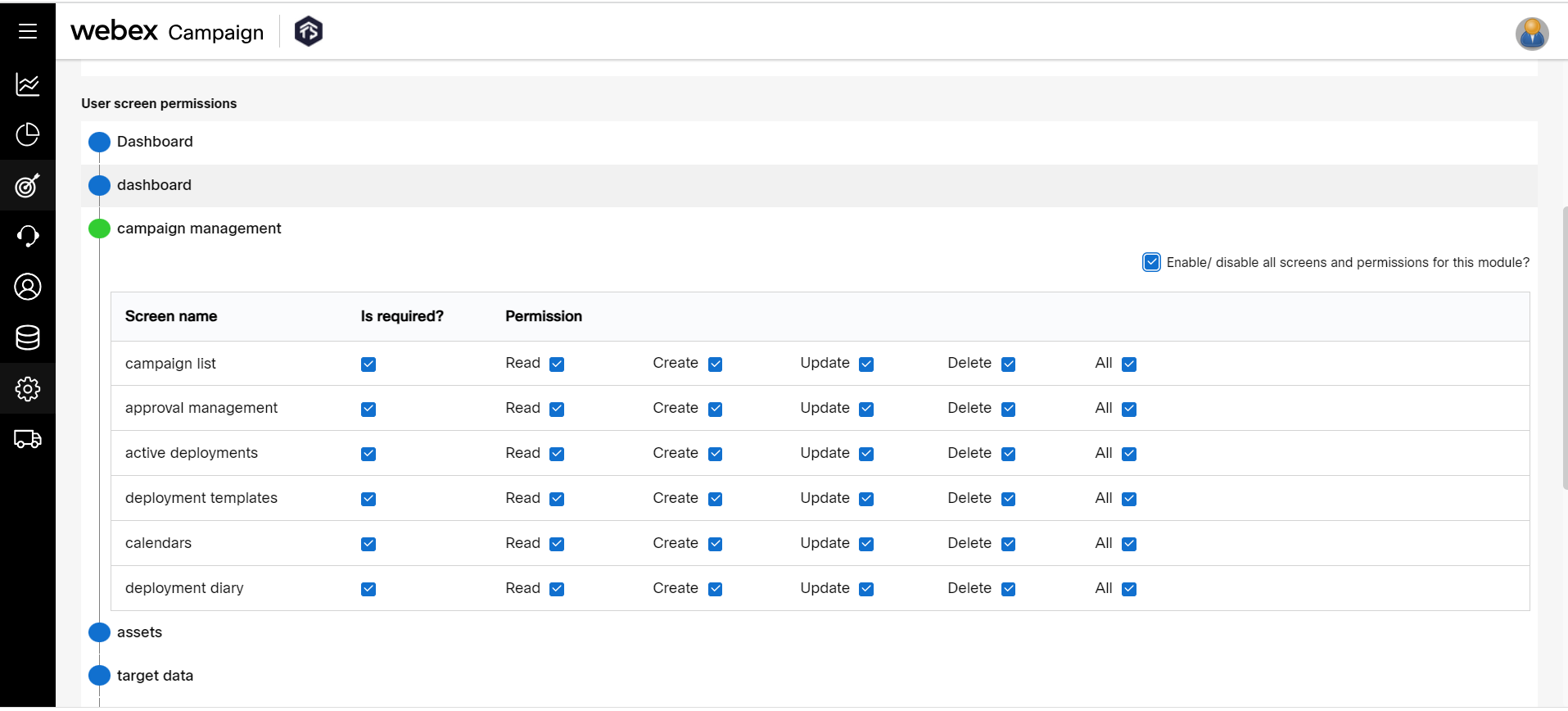
- Select the required Welcome Screen (Home screen at login) option from the drop-down, and click Save .
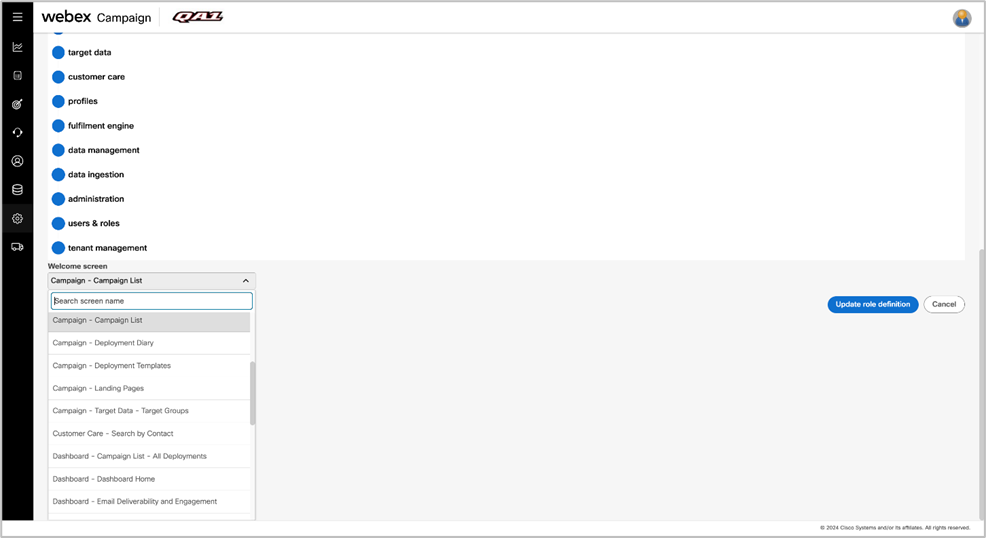
Edit or Delete a Role
- On the User Roles list screen, click the ellipses icon of the required User Role and click Edit.
- Make necessary changes and click Update.
- To deactivate a user role, click the ellipses icon of the required User Role and click Deactivate.
- To activate a user role, click the ellipses icon of the required User Role and click Activate.
- To delete a user role, click the ellipses icon of the required User Role and click Delete.
While any campaigns created by a user assigned to a role that is in an active state, such user role cannot be deleted.
When a role is deleted, all users who are assigned to that particular role will be inactivated.
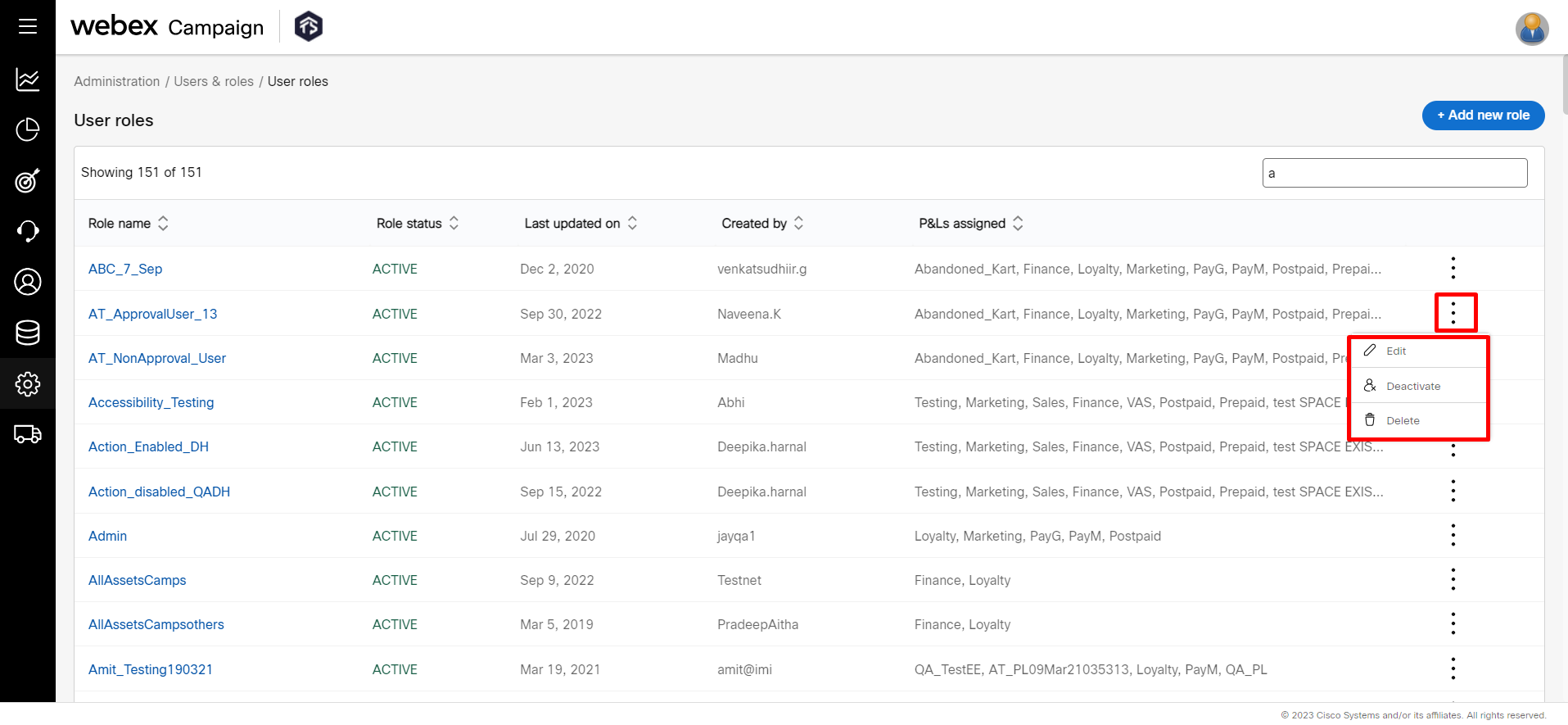
Updated 12 months ago